What we can all learn from Austin's miraculous journeyThe Austin Hatch story forces us all to look within at what we can offer the world. It challenges us to re-define what's most important about living a life of purpose and meaning. I encourage you to devote yourself to watching the full 16-minute video below to learn about Austin's story. I am a firm believer that we can all reach unknown levels of excellence, both personally and professionally, when we take the time and energy to truly reflect upon our life's purpose (and work). I have spoken about this several times at conferences and workshops, over the last few years, in an effort to help educators understand the powerful role that they play in lives of the students that they teach. Seeking to better understand our purpose and calling is no easy task. It takes hard work at a profoundly deep level. I've had people say to me, in the past, that it's all a bit too heavy and serious. That life is meant to be fun and we just need to enjoy each day without getting caught up in taking ourselves so seriously. I also know a few people who have a 'you just need to get on with it' type attitude which has worked to serve them well in their personal and professional life. I certainly don't judge these points of view as being wrong. However, it is imperative to understand that the process of clarifying our purpose and better understanding our calling is a richly rewarding endeavour that can bring a mountain of joy, satisfaction, and sense of fulfillment in our lives. It's a noble pursuit that is not rooted in any final destination, but more so in our journeys. When I learned of the Austin Hatch story, it helped me to put into better perspective the true power of the human spirit when overcoming seemingly insurmountable odds in our lives. When thinking about our own ability to work through problems, overcome adversity, and demonstrate grit and resilience, we can sometimes fall into a trap of thinking we are helpless. That no matter how hard we try, we cannot be what we set out to be or achieve the goals and dreams we hold close in our hearts. Austin's story reminds us that we do indeed have the capacity to achieve excellence. I won't do justice explaining Austin's life and what he's gone through, so you will need to set aside 16 minutes to watch the video below. As you watch, think of the hardships you've experienced, not in an effort to compare, but more so to understand your thought patterns when confronted with these obstacles. Reflect on the limitless power that you possess to work toward your goals and dreams whatever they may be. If we apply even 5% or 10% more of ourselves to working toward these dreams and goals, how much of a difference could that make? Why am I sharing the Austin Hatch story with you? Because I feel lucky and blessed to have come across it (Thank you Travis Stephenson!!). I believe we are all meant to be here for a reason. We all have a calling that is worth pursuing. What's yours? Does it require staying in your current profession to achieve excellence or taking the leap to do something else? Either way, I hope Austin's story empowers you to answer this question and take greater action in your lives.
44 Comments
I began to tinker around with 'walking reflections' last year in my classes. Rather than the traditional time out in which I tell the students to "Go and sit on the bench and think about things", I decided to try out something different. The 'walking reflection' strategy is an extension of my 'walk & talk' strategy. I've blogged about my 'Walk & Talk' strategy in the past and presented this idea several times at workshops and conferences in Asia, Europe, Australia and North America. I've received very positive feedback from teachers who have tried the approach out saying that it has worked well in their programs. As I am now in a consulting role, I often have a chance to observe a number of different PE programs in action. The general way in which poor behaviour is dealt with by teachers is by giving time outs and sending them over to a bench or some other area to sit. There is nothing wrong with this strategy as it is sometimes best to send students out when they get too worked up or behave poorly. However, I'd like to share with you a different approach that worked well for me when I put it into action last year. I call it a 'Walking Reflection' and the main idea is that it allows students to go for a walk around the gym or outside PE area to cool off and think about their actions. I find that allowing the students to be in motion while reflecting serves to help them cool down faster. There are a few steps that I follow when giving a 'walking reflection' to a student. This is how is goes..... Before going into step 1, it is important to clarify that most students will have received a warning first before having to do a 'walking reflection'. If there is a particular student who is really struggling or the behaviour exceptionally poor, no warning is given and they must immediately go on a 'walking reflection'. Step #1 When I notice that a student has misbehaved, I call them over and let them know that they need to go on a 'walking reflection'. This means that they must immediately begin walking around the gym and think about their actions. At times, it may be a problem between two or three students or it could be one student on their own. If more than one student is involved in the problem, they must do their 'walking reflection' separate from one another. Step #2 Students who have been given a 'walking reflection' continue to walk and reflect until they feel that they are ready to talk about it. I had a sign on my gym wall which indicated that that was where they were to go when they were ready to speak with me about the problem. The black circle with yellow star is just one example of what this sign may look like. In my program, the sign was about 18 inches (45cm) in diameter. It doesn't matter what the sign is provided that the students know that is where they are to go when they are ready to talk. As the students do their 'walking reflection', when they feel that they are ready, they walk over and stand under the sign which indicates to me that they want to speak about things. This kickstarts step 3 of the process. Step #3 If more than one student was involved, they have to both be under the sign which means that they are both ready to speak. Often times, what happens is that one student is at the sign first, standing there alone. They need to wait until the other student joins them under the sign to begin talking the problem out. When I see that the student or students are under the sign, I go over and have a discussion with them about what happened. There are times when I don't even have to get involved in the discussion if more than one student is involved because they work it out on their own. The chats never take that long and most of the time, the student or students are allowed to join back into class. Major Considerations I had just begun to use this approach last year and it really did work well in my program. However, there were times when some students would not be willing to go and stand under the sign to show that they were ready. When this happened, which wasn't that often, I would go over and join the student on the walk and begin to chat with them. We were usually able to resolve the problem and carried on with class. In some cases, there were a handful of students who didn't like to talk even though they were standing under the sign. When this happened, I had a reflection sheet ready to go and told them that they had to do a written reflection. Here is an example of what that written reflection template looked like: I've included a PDF copy of the reflection sheet for any teacher wanting to try it out. Click on the link below to download a copy.
The reflection sheet above is just one example. There are a number of different ways that you can design these reflection sheets. I thought that the positive emotions were a good thing to use on the reflection sheet as the students may express being 'proud' for having resolved the conflict or 'happy' that they made up with a friend, etc. The negative emotions on the reflection sheet gives them a chance to identify with the feelings they had when they were sent on the 'walking reflection'.
I have shared the 'walking reflections' with a few schools that I have consulted with in hopes that it provides teachers with different approaches to use when dealing with poor behaviour in their PE classes. I'm sure many of you are totally on top of behaviour management in your classes, but thought it was a good idea to share the 'walking reflection' strategy with you in case you want to try out something new. If you do try it out, let me know how it goes! |
AuthorKAUST Faculty, Pedagogical Coach. Presenter & Workshop Leader.IB Educator. #RunYourLife podcast host. Archives
September 2022
|
||||||
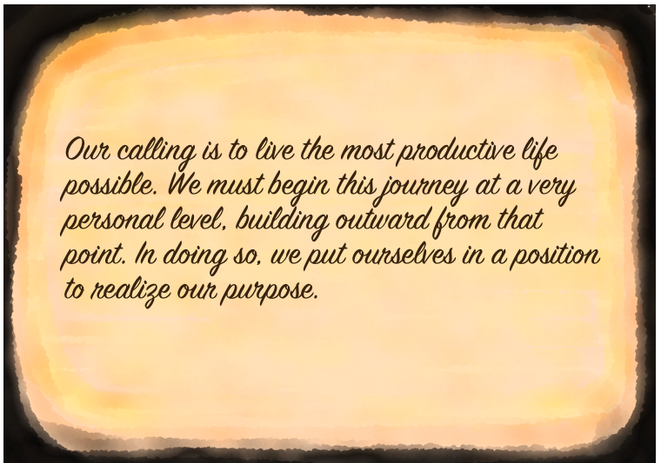
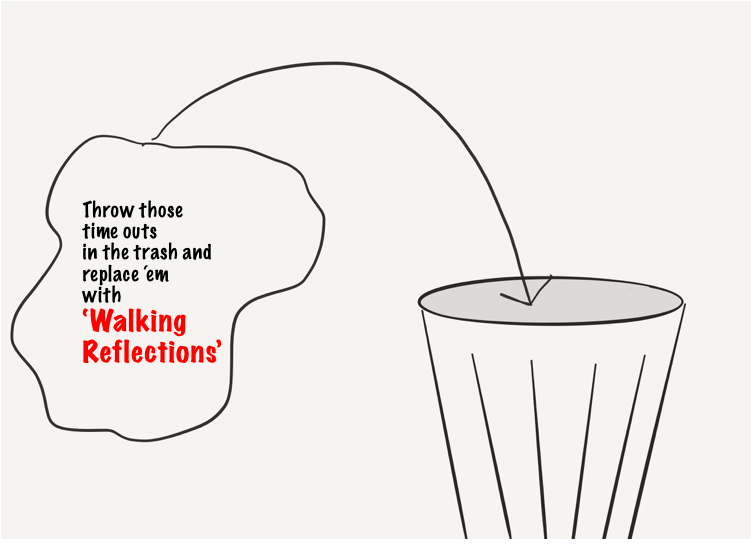
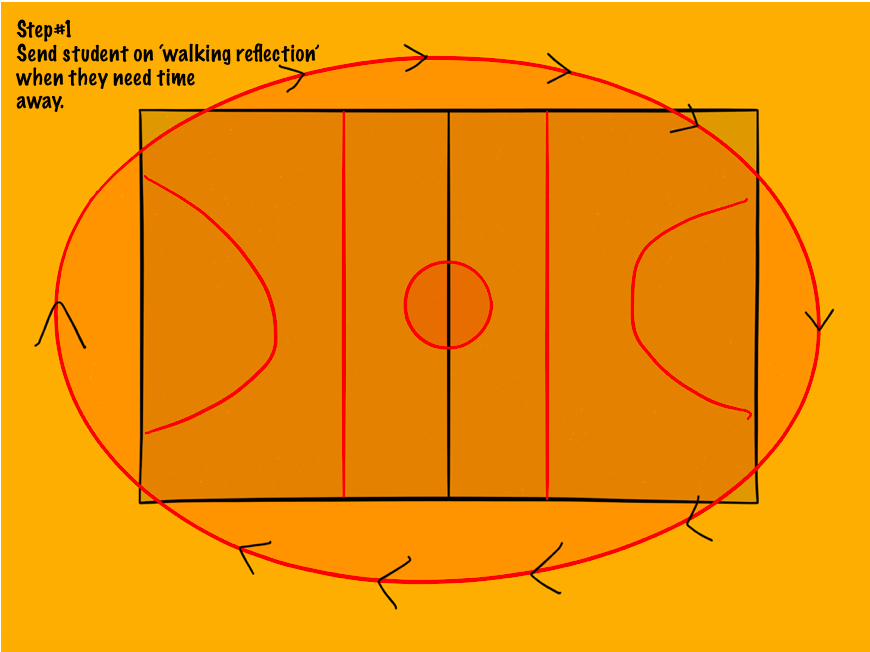
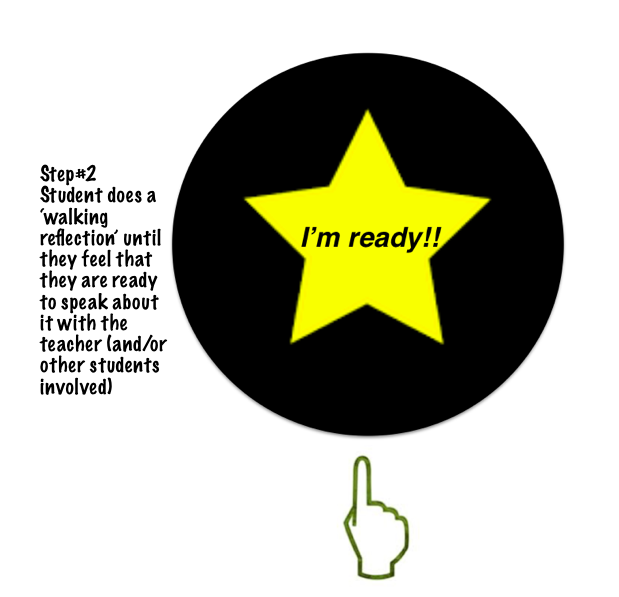
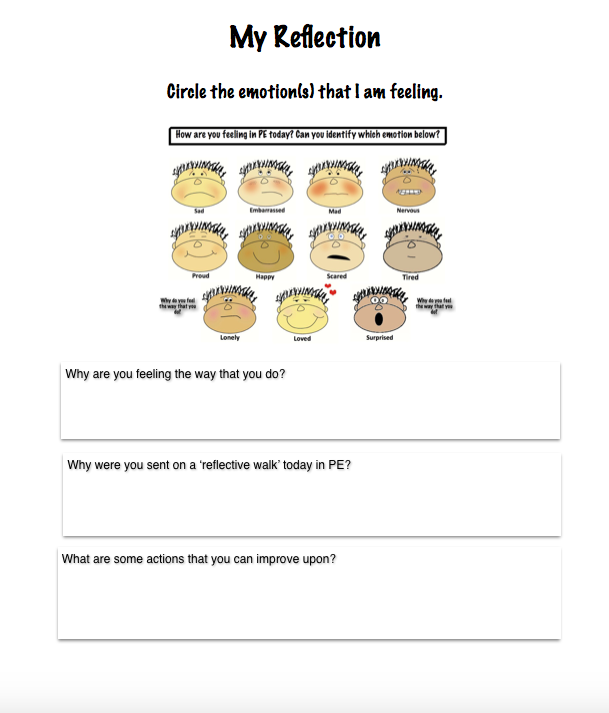
 RSS Feed
RSS Feed